

Thanks to our lengthy ride on Day 13, Saint-Jean-Pied-de-Port was finally within our reach: just 40 km (or so) from Saint-Palais. The roads (through Basque countryside) are twisty and very steep in places, but they’re beautiful to ride on, and the downhill sections almost make you forget the ups.
This post is heavy on photographs, light on text—which surveys (of our pair of loyal readers) have shown to be the most popular ratio.

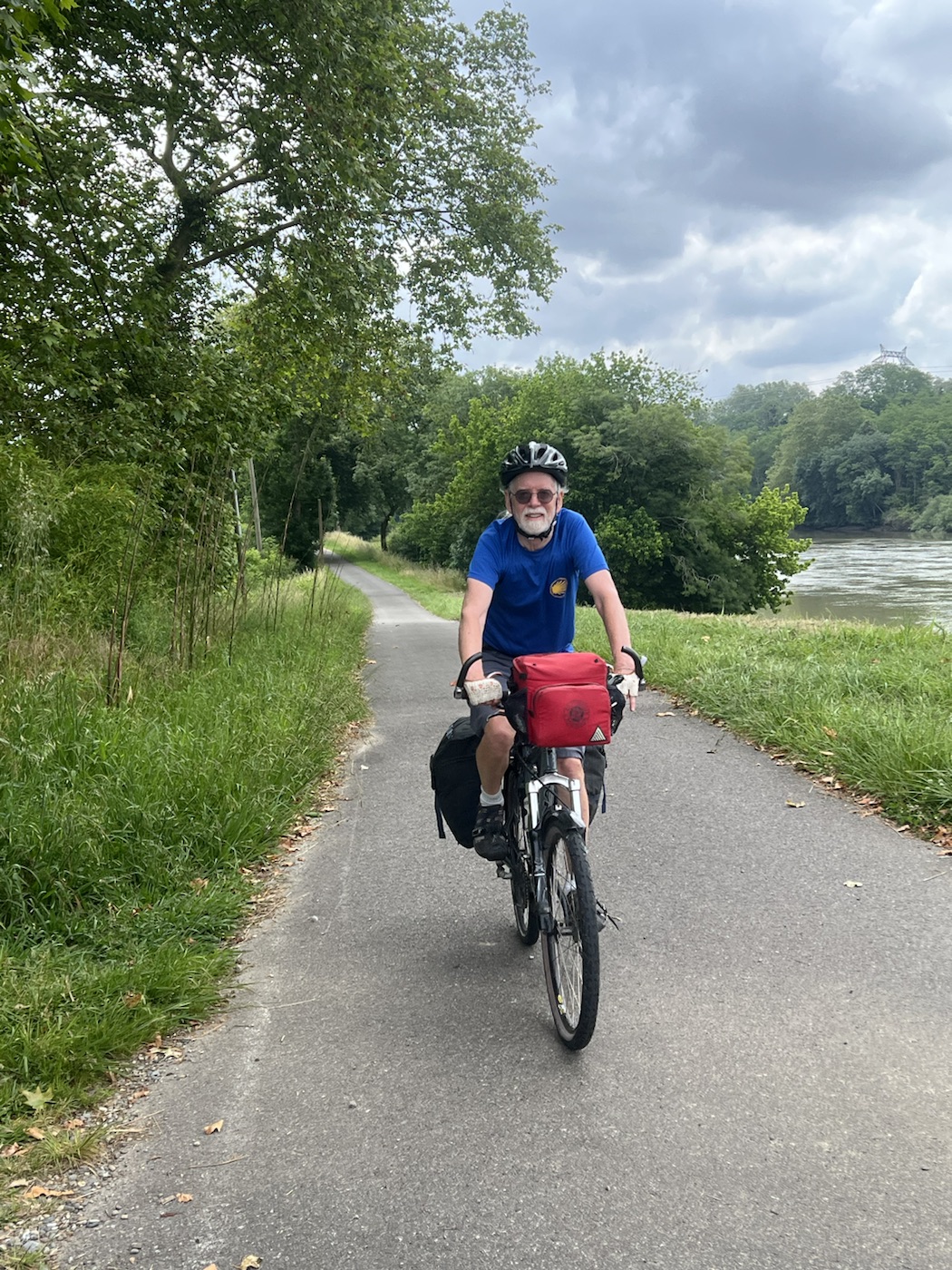
From Saint-Palais, the road begins to climb, and not far from Saint-Palais there is a turnoff to the Stèle de Gibraltar, which symbolically marks the point where three of the four Camino routes through France converge: the route starting in Le Puy; the route starting in Vèzelay; and the route A&I were following, starting in Tours. We’d visited the stèle once before, in 2015, when we’d cycled the Vèzelay Way. Not much had changed.
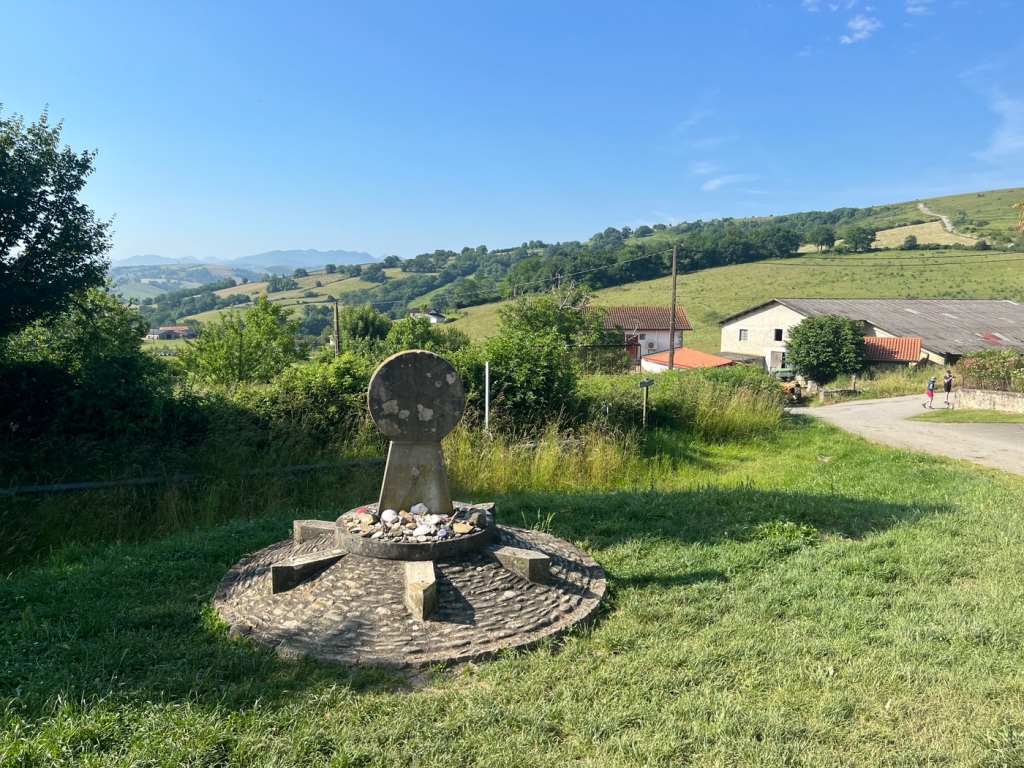
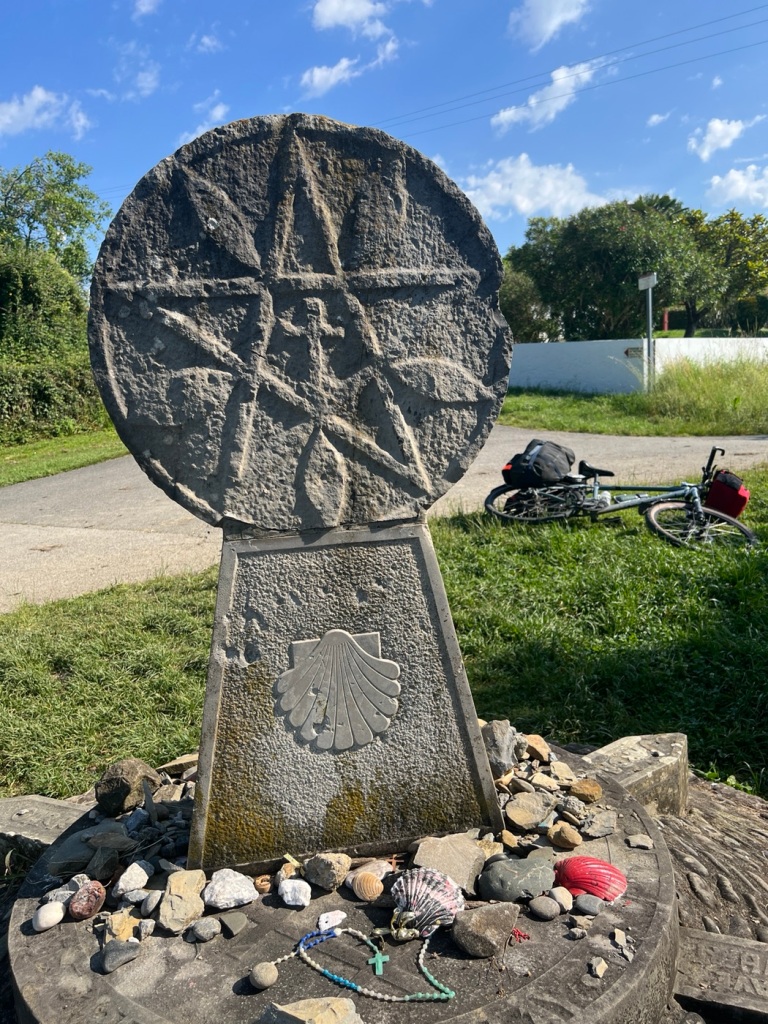
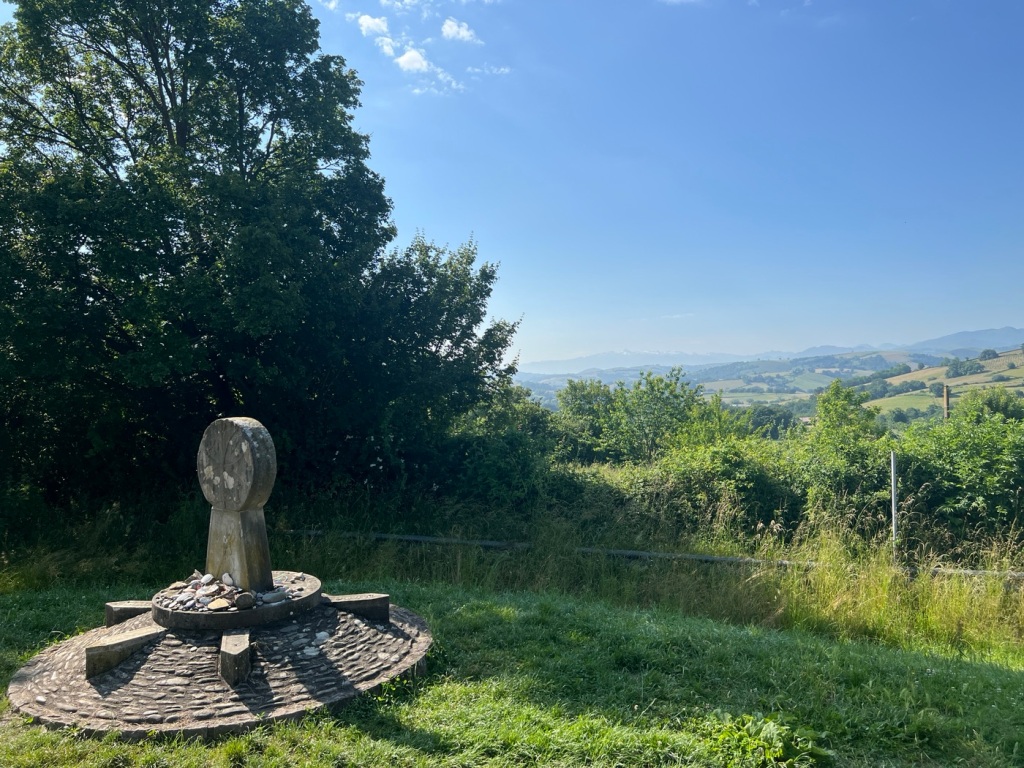

The small roads through this Basque region are like roller coasters, a downhill is inevitably followed by a punishing up, but they pass through beautiful countryside, and avoid the busy red roads. At one point, as the small white road we’d been riding on crossed the main road, we found a fit young cyclist who’d been riding an E-bike, resting. “I couldn’t do it without an E-bike,” he claimed; charitably, we refrained from saying anything that might make him feel, well, wimpy.
He was from Andorra, and planned to have lunch in Saint-Jean-Pied-de-Port, where he’d recharge his E-bike battery, and then intended to spend the night in Roncesvalles, at the top. Two days ride for us, on our pedal bikes.
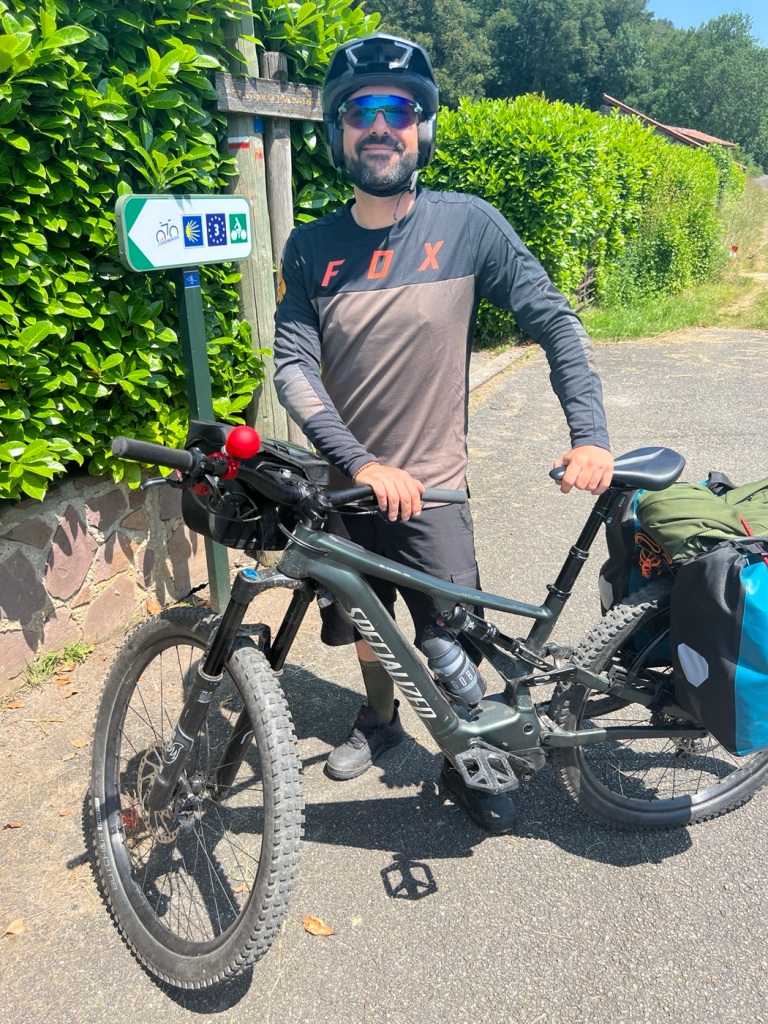
We wished him “Buen Camino” and continued on our way, following the Eurovelo 3, and thinking that he’d be passing us at some point soon, breezing up the steep hills on his E-bike, hills that we’d had to push our own bikes up (see photos just above). But our Andorran friend never appeared; he’d obviously been following the busy main road all along, rather than the Eurovelo 3, making good time as a result, but missing so much of the beauty that can only be found along the quieter roads.
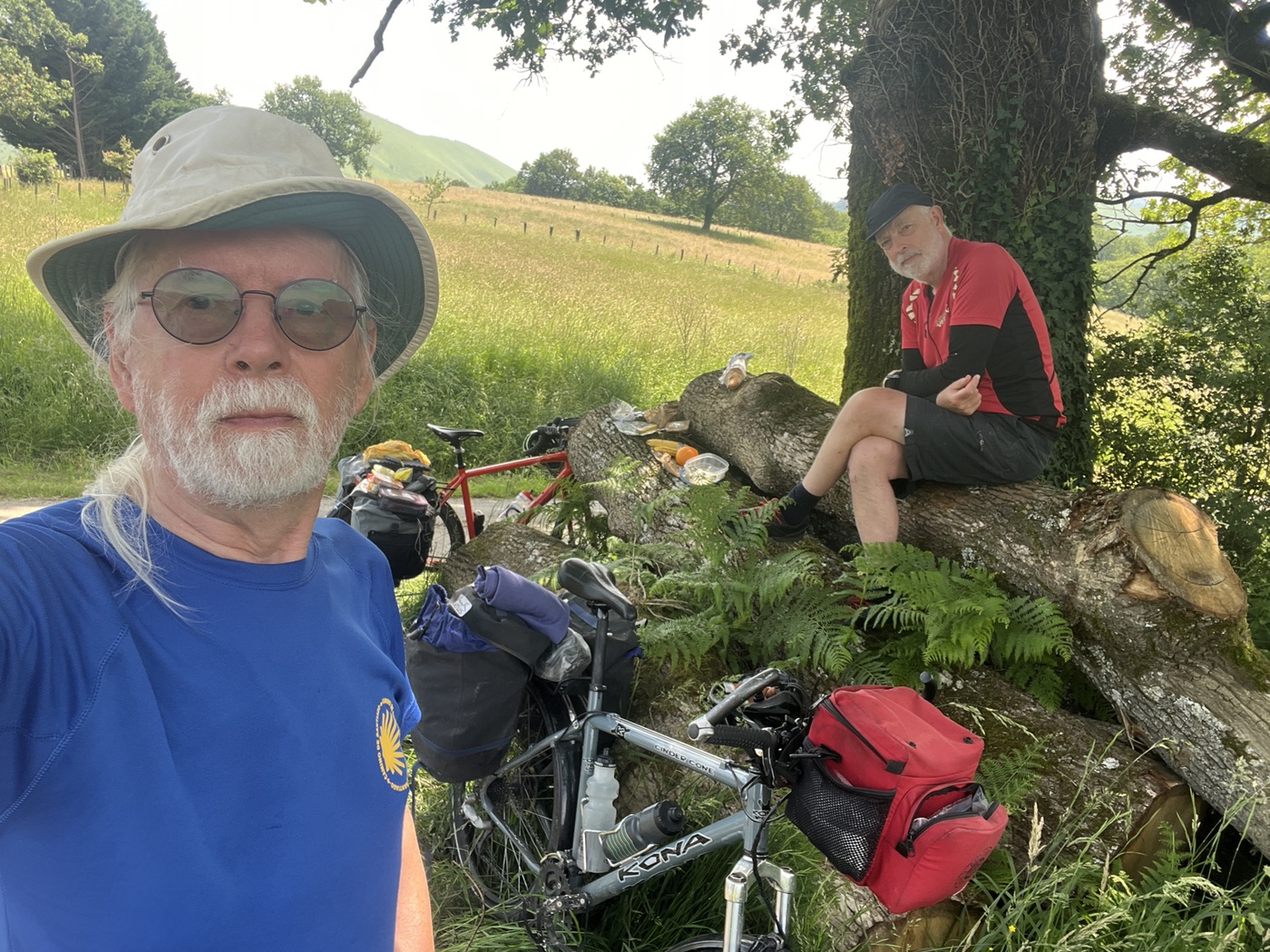


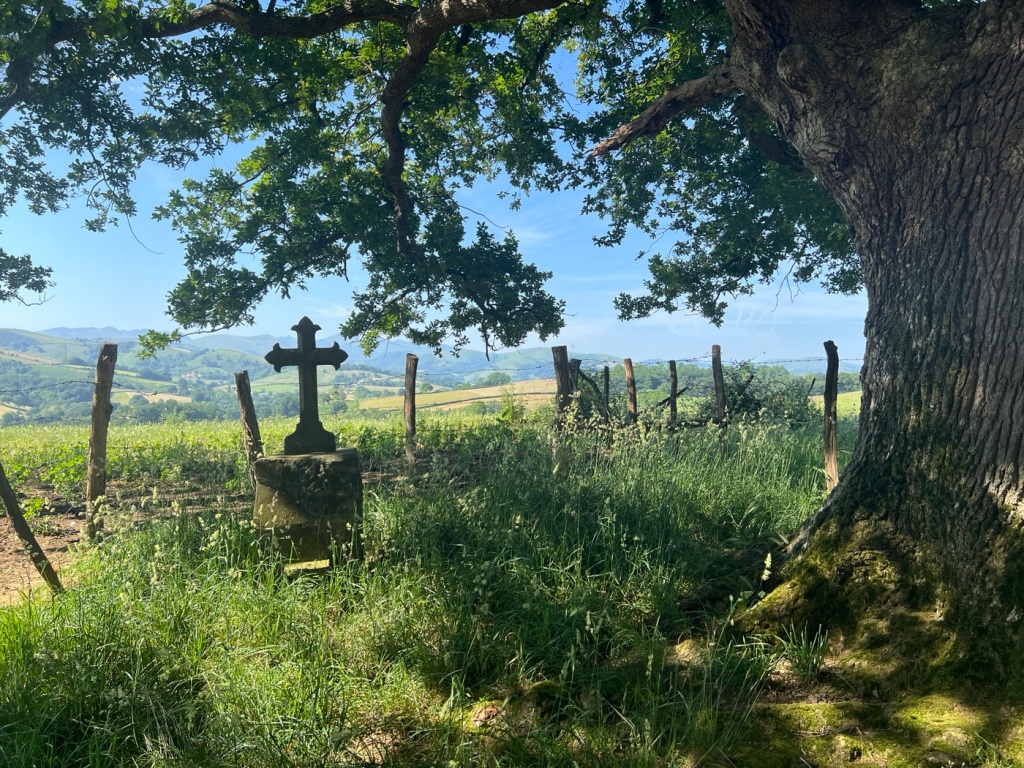


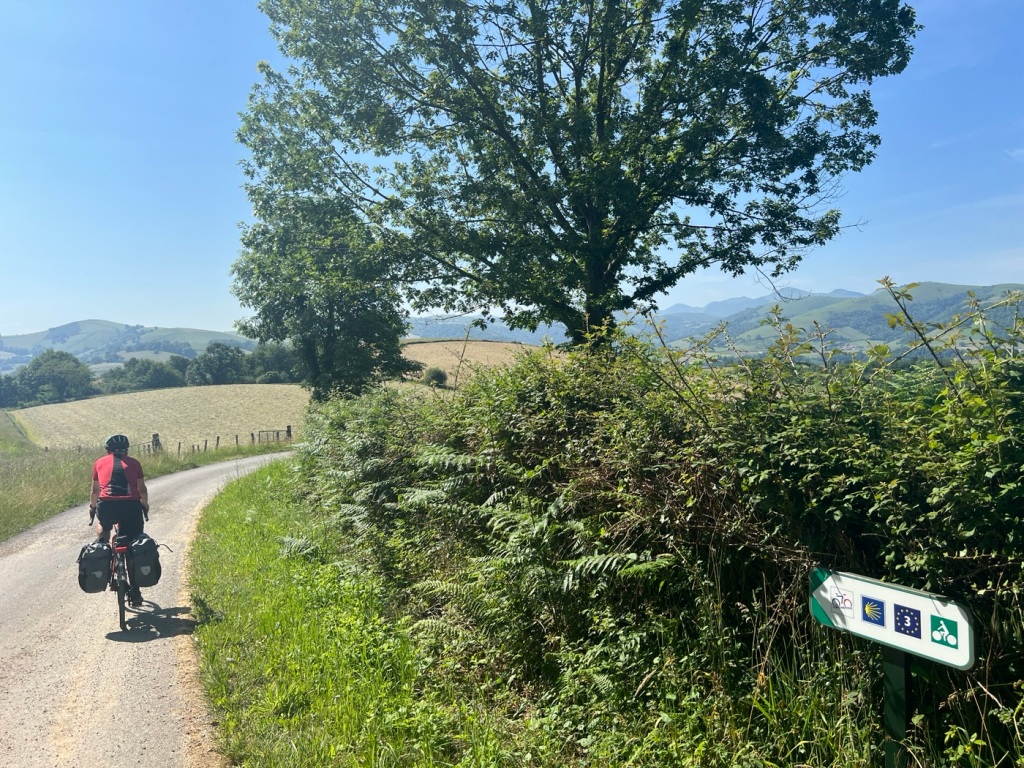





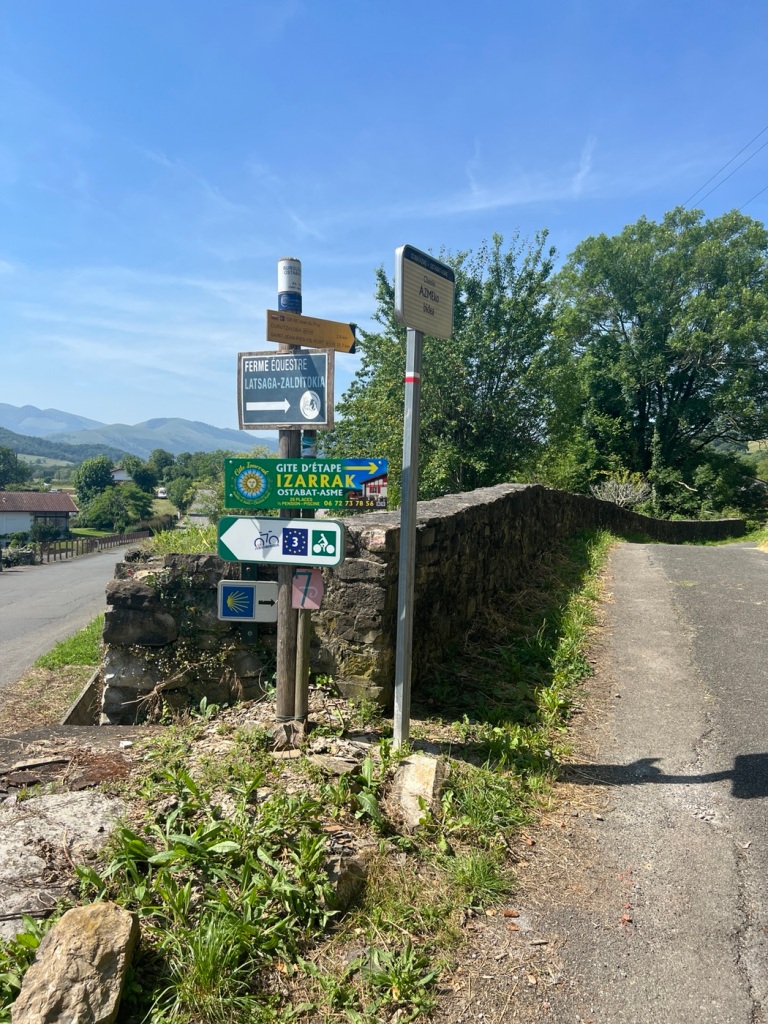
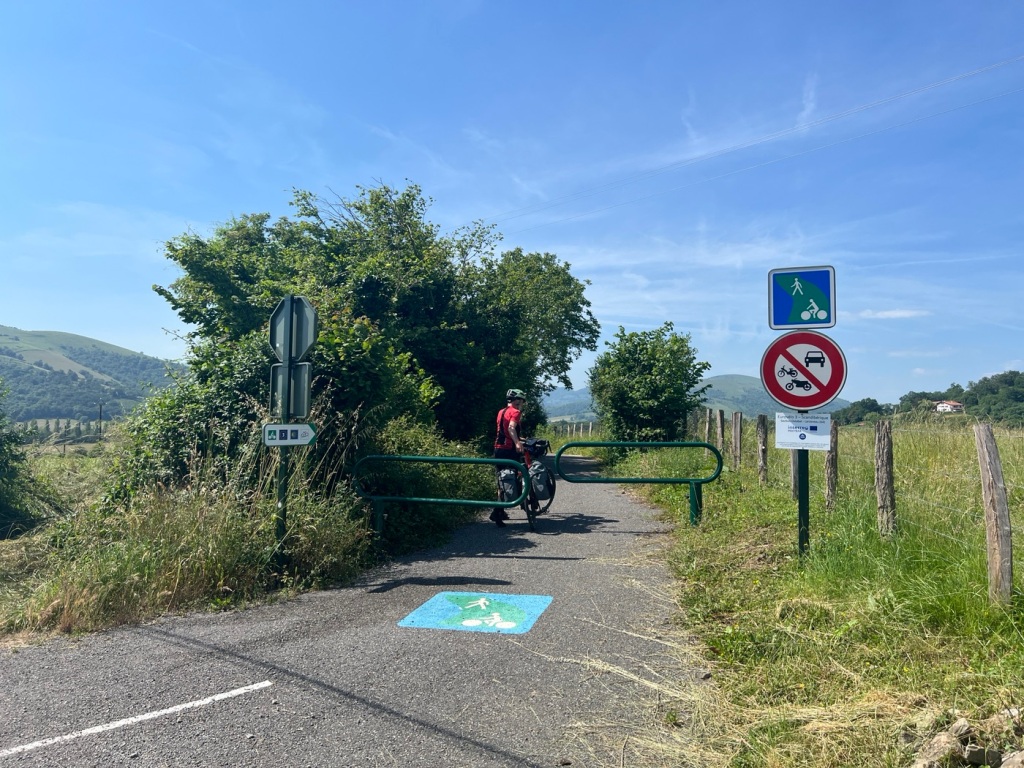


In the final stretch before Saint-Jean-Pied-de-Port, things began to feel a bit familiar: a tree; a turn in the road; a specific view; a church. Walking pilgrims, who’d been following a different route, were suddenly visible on the road.




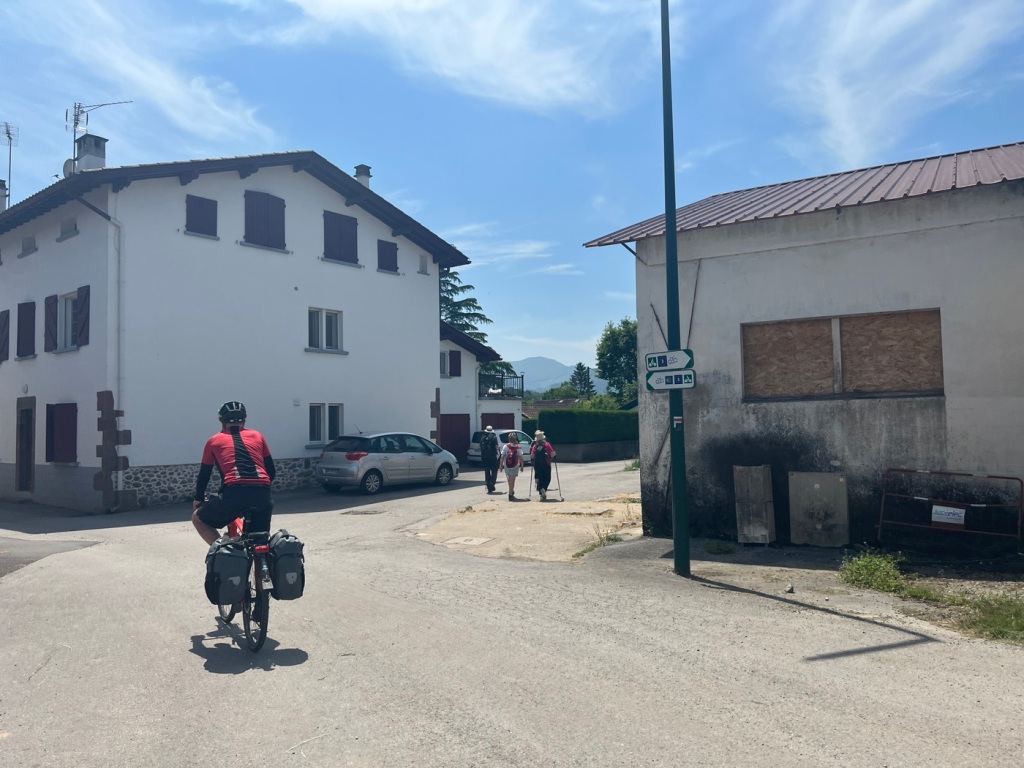
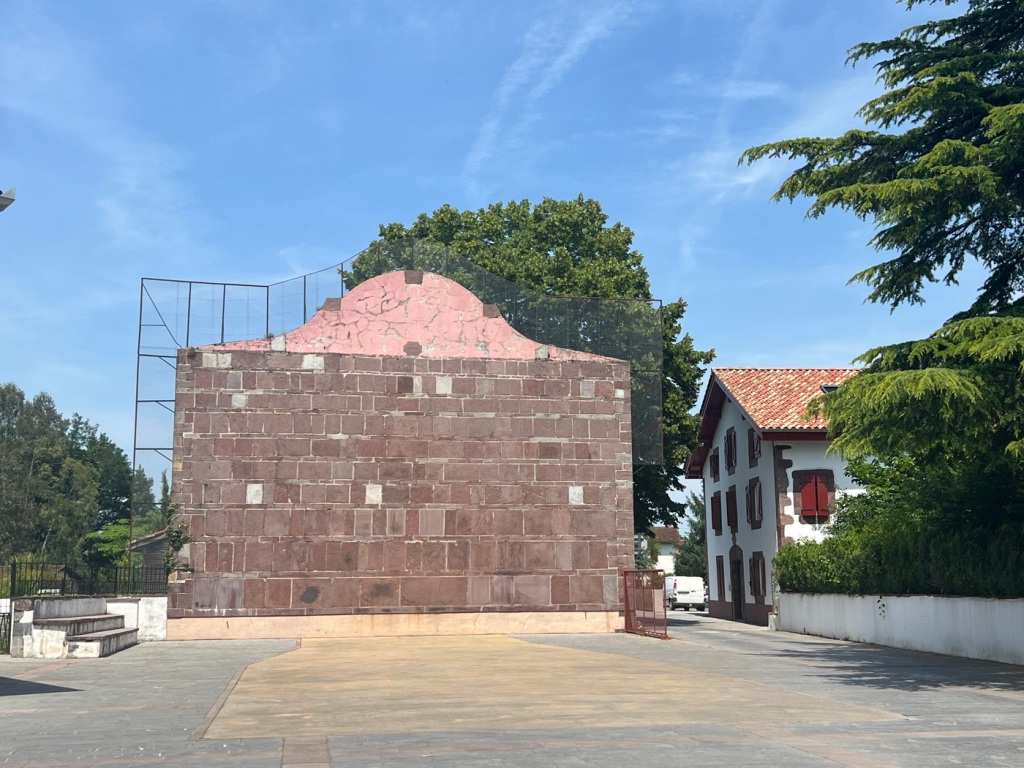


There’s a short, steep hill just before the Port Saint-Jacques, where pilgrims have traditionally entered the town. Most of the pilgrim refuges are located just through the gate, and they can fill up fast. We photographed a group of walkers who arrived just before us, and had one of them take a photograph of us as well. Triggering memories of our previous Camino ride, in 2015.

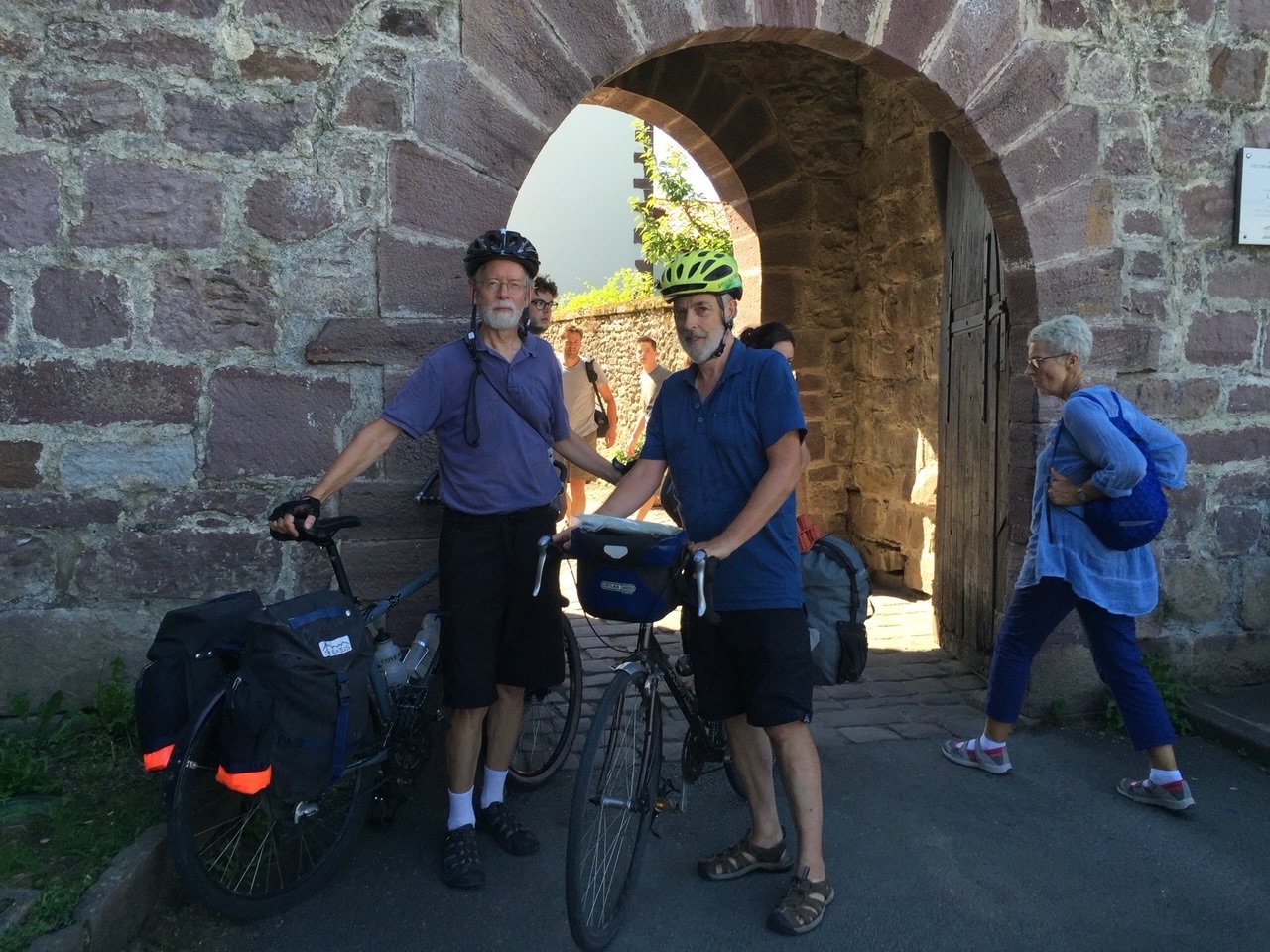





Rest day in Saint-Jean-Pied-de-Port
Saint-Jean-Pied-de-Port is a busy tourist town in the afternoon, as pilgrims arrive and check into their hostels. The main street is cobbled, and leads steeply down to the Port Notre-Dame and the Nive River, with souvenir shops, and shops selling Camino necessities, on both sides.
In the morning, as the walking pilgrims get an early start, hoping to beat the heat of midday, there’s a kind of “rush hour,” everyone heading downhill with their backpacks and walking sticks, passing through the Port Notre-Dame, across the Nive River, to begin the climb. After that, the town feels quite deserted.
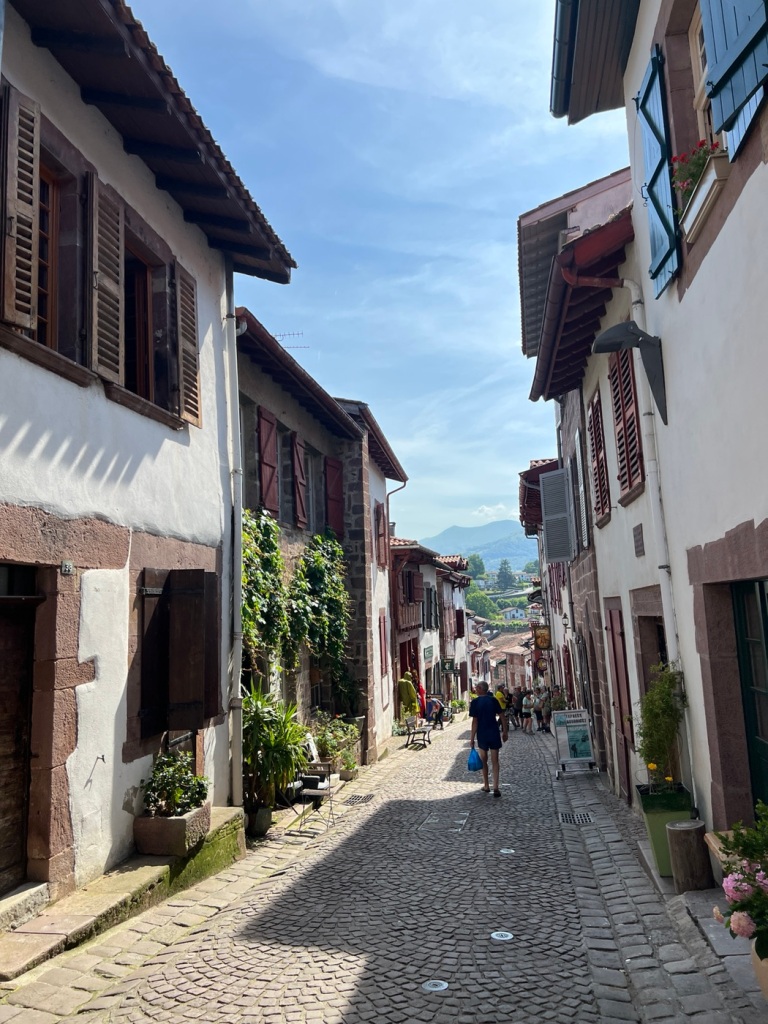











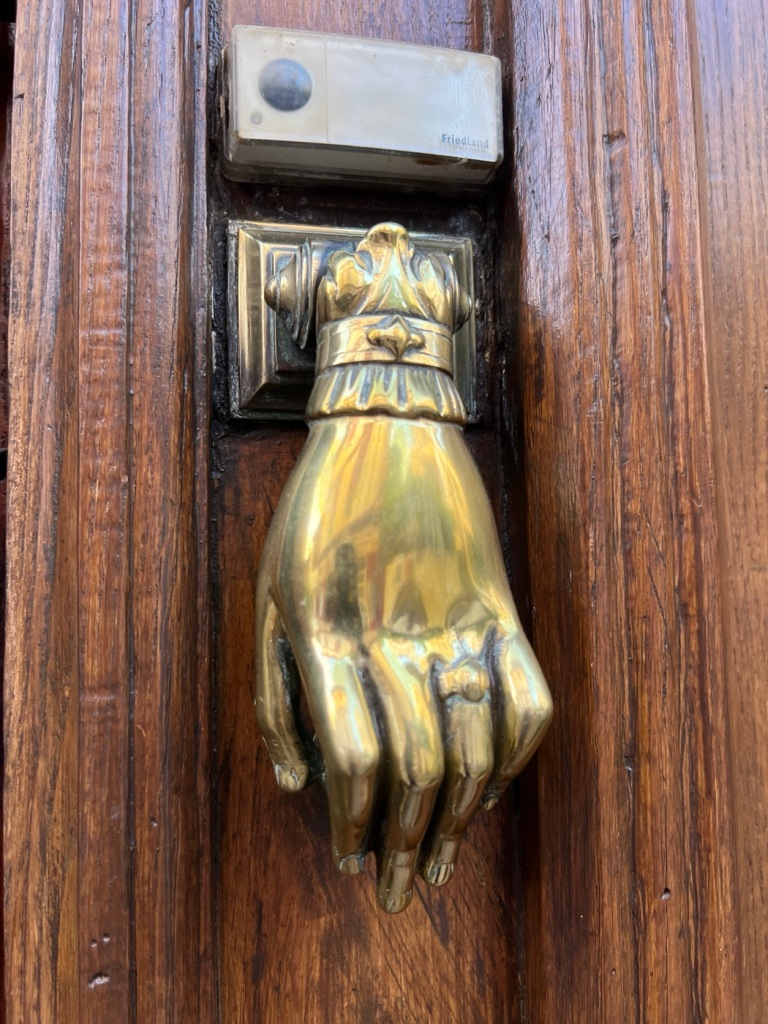

It’s not a town where you’d want to spend more than a night, and two nights only if you’re taking a rest day (as we are, to steel ourselves for tomorrow’s climb over the pass and into Spain).
We switched from our hostel/refuge to a proper hotel, and then just lounged about: drinking coffee, browsing the shops, reading.
We did a bit of shopping, but limited ourselves to light things only—since who in their right mind would want to add weight before a steep climb to a mountain pass? So if you see A sporting a (very light) authentic Basque beret, don’t be surprised.

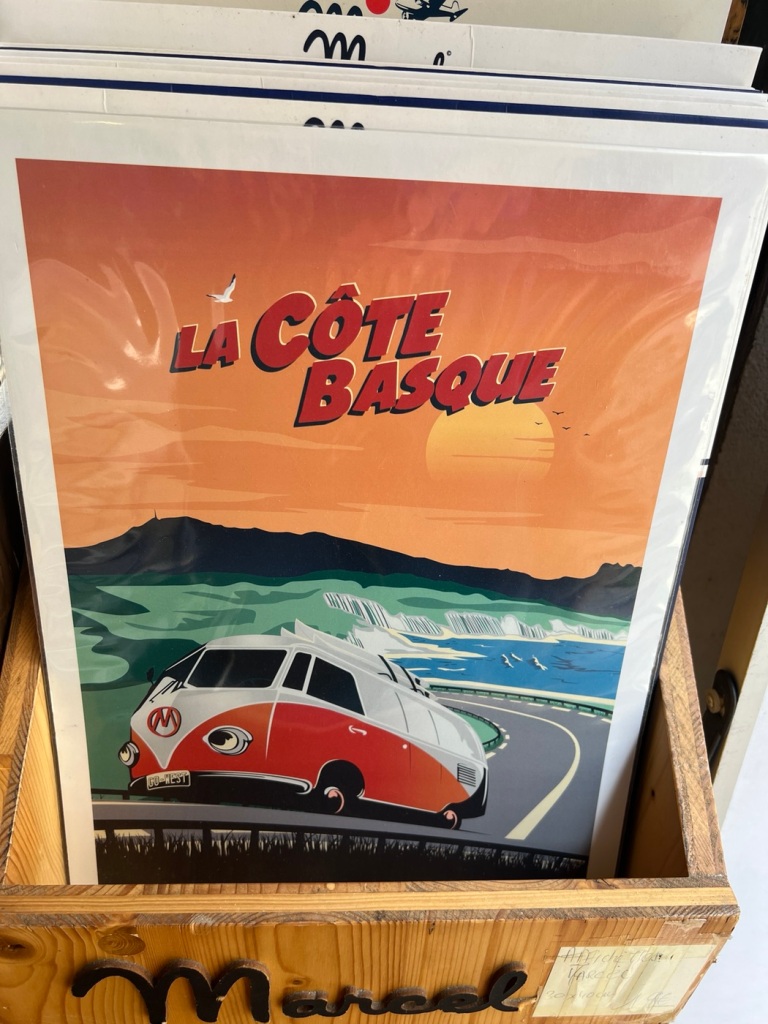


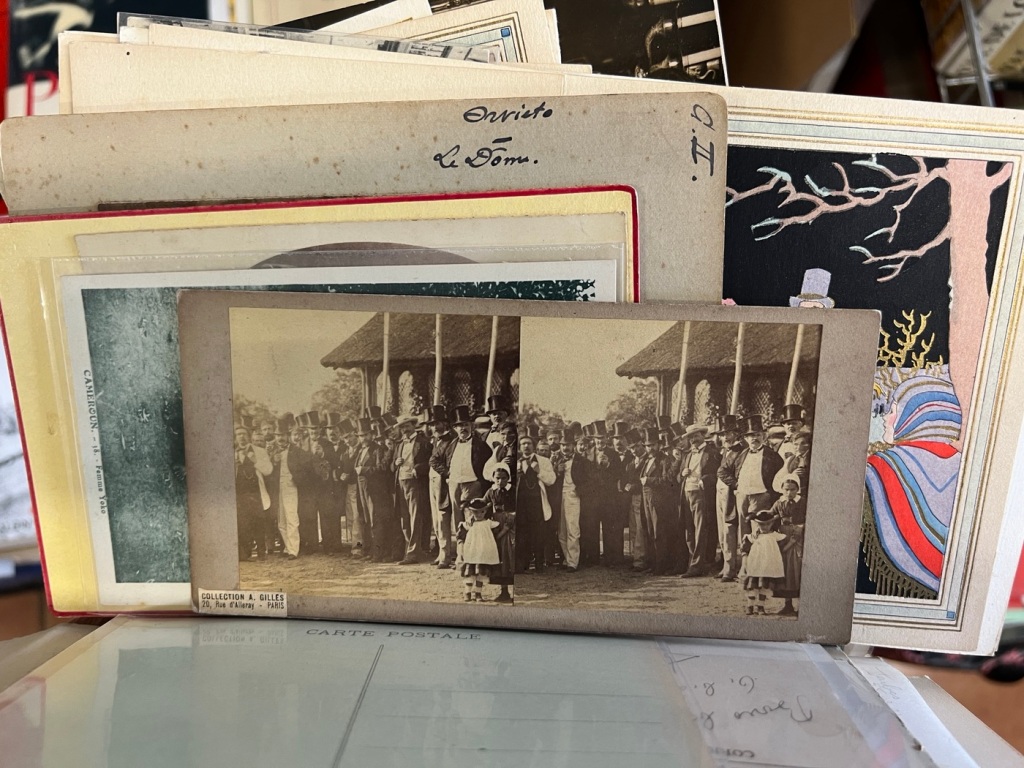

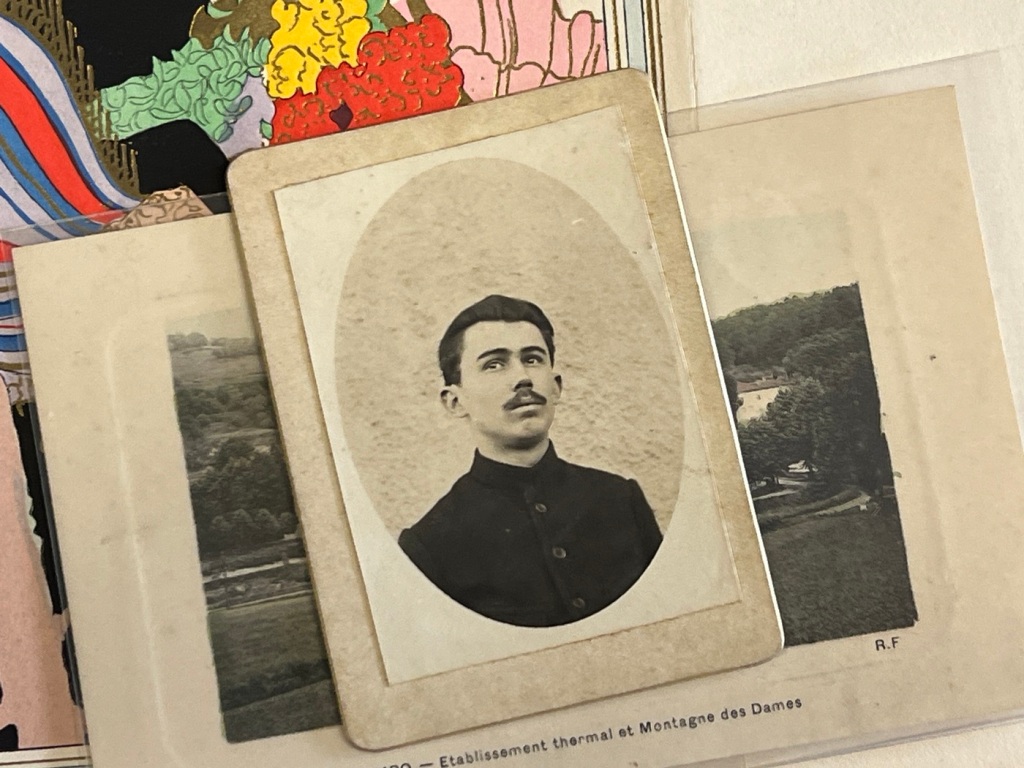


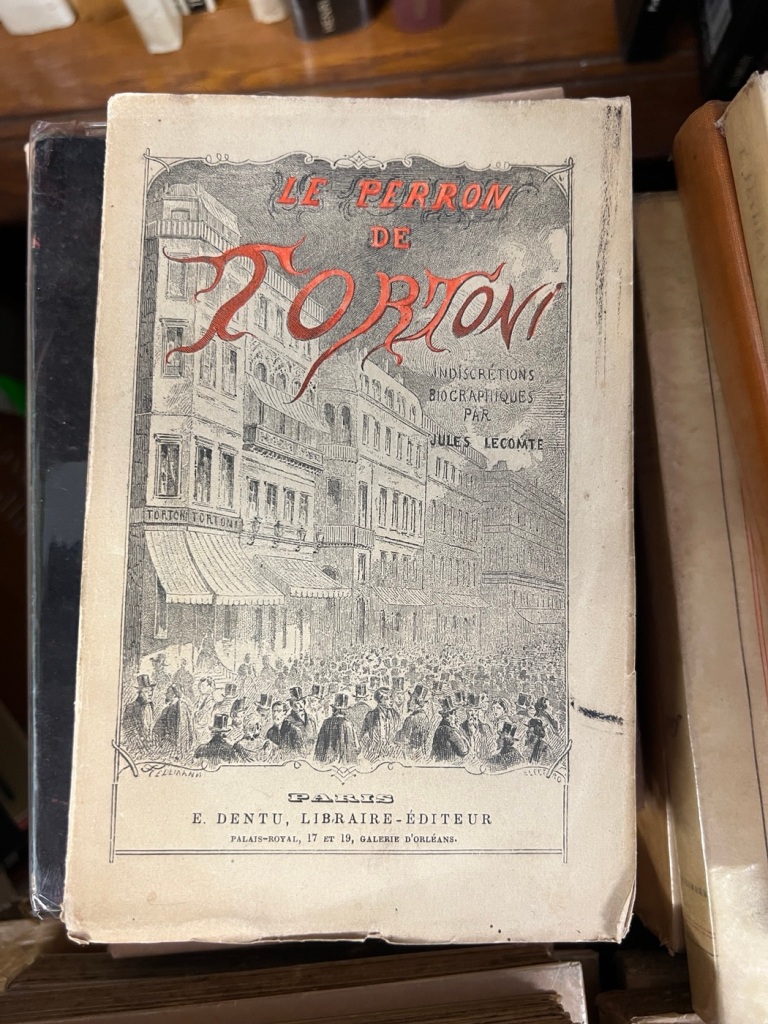
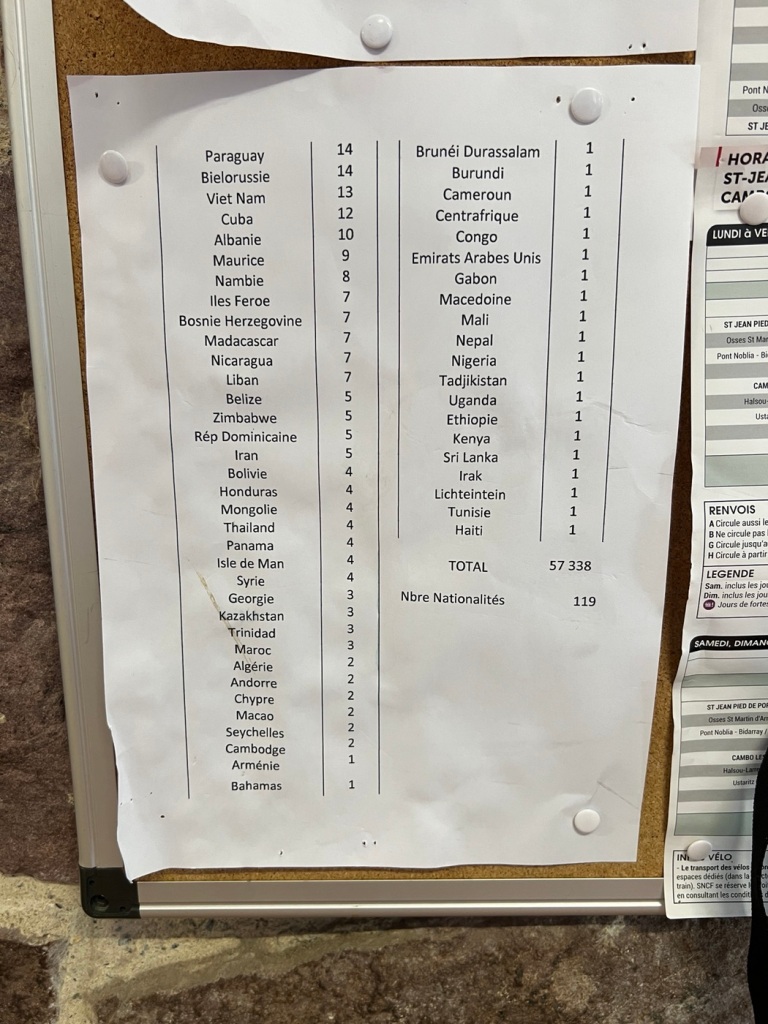



A and I will try to get an early start in the morning, when the air is fresh. It’s all uphill from here, but we’ll plan to meet you again at Roncesvalles, on the other side of the pass, in Spain.

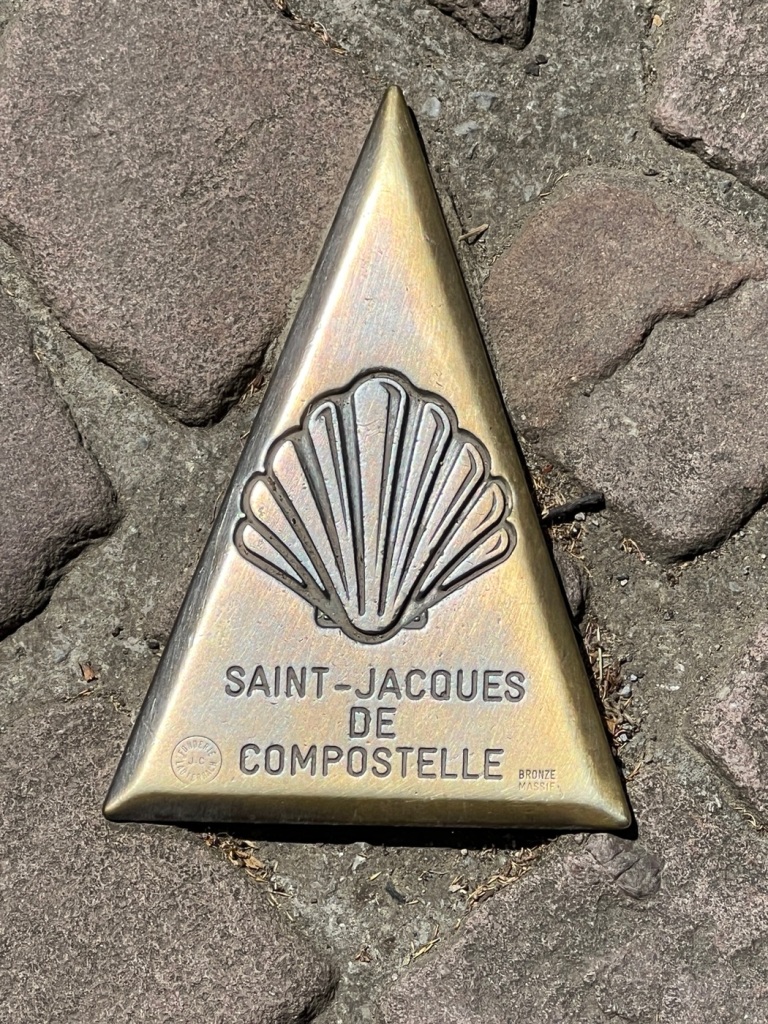
The smugness of you sweaty types! Have you TRIED e-bikes? They’re a revelation. Come and try ours next year. You won’t have to bring yours in that coffin thing.
LikeLike
Definitely didn’t want to appear smug about pedal vs E-bikes — I’m a believer, and will get one myself at some point. It was just a bit astonishing that this fit YOUNG man seemed to have gone direct to E without having considered pedal for the voyage. Plus his decision to use main roads; he seemed (to me) to have missed a couple of the points about Caminoing.
LikeLike
isn’t France famous for its cheeses? Have I missed your talking of a quick lunch, chunk of a local cheese sandwiched by a local bread? Have I?
LikeLike
No, you’re absolutely right: we have not paid sufficient homage to the wonderful cheeses of France, and here we are, about to cross into Spain. We’ve eaten Comte regularly on our picnic lunches (Comte is a particularly durable French cheese, capable of withstanding days in a bicycle pannier without refrigeration). We’ve also sampled a variety of goats cheeses: delicious; not quite as durable. And I’ve got a nice-looking chunk of Morbier I’ve been waiting to sample.
I suspect that, if the French cheese-marketing board had made us a better offer, we’d have featured more of their cheeses in this blog. But they hit us with a lowball offer, hence the lower profile…
LikeLiked by 1 person
The text to picture ratio is perfect, gives it context!. Yes, the e-bike n this context, this young man definitely misses a few things. And you’re far from Comté but it does keep well. So do some of the (very hard) old goat ones ?
Spain is not bad either on cheeses. And what abut fruits? A bit early in season, but still much more choice and taste than in Ireland I suspect!
LikeLiked by 1 person